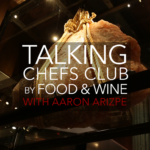
It’s official. Eating in Spain will be one of the best culinary experiences of your life. The north of Spain – especially the region known as the Basque Country – offers some of the best food in the world prepared by internationally celebrated chefs who are revolutionizing the global food scene and earning all sorts of awards. The cuisine is so innovative that the chefs are often referred to as “ authors of the kitchen.”
The 4 northern regions, known as “Green Spain,” include the Basque Country, Cantabria, Asturias, and Galicia. They border the Cantabrian Sea and Galicia, furthest west, faces the Atlantic as well. The chefs take advantage of the “local produce” and the food tastes like where it comes from: the sea and the farm.
In 2019, seven Spanish restaurants were included in the World’s Fifty Best Restaurants with three in the top ten spots. In the same year, two Spanish chefs ranked 2nd and 3rd place among the The Best Chefs in the World.
If that’s not enough to whet your appetite, let’s talk Michelin stars. Per capita, there is a greater concentration of Michelin starred restaurants in the Basque country than in any other place in the world. Leading the pack is Martín Berasategui, a Basque chef who has earned 10 stars across 5 of the 15 restaurants he operates in the country.

But food and wine are not the only reason to spend time in “Green Spain”. Spectacular scenery, rugged coastlines, seaside resorts, diverse cultures, historic centers dating to pre Roman times, medieval villages, and prehistoric caves all make this an immensely interesting destination with a multitude of UNESCO World Heritage Sites. In addition, more than 33,000 visitors come from all over the world each year to walk one of the many routes of the famous Camino de Santiago or the Way of Saint James.
I recently returned from a six day journey aboard a “tourist train” that traversed Green Spain starting in Bilbao in the Basque Country and ending in Santiago de Compostela in Galicia with stops along the way in Cantabria and Asturias. The Costa Verde Express, operated by the Spanish train company Renfe, blends modern conveniences with restored Pullman cars from the 1920’s. It did not move during the night in an effort to promote sleeping comfort. The journey began in the morning during breakfast and each day took us to a different city in a different region. We were then driven by motor coach to visit the historic centers, seaside villages and coastline where the tracks did not reach. As we explored, the train moved westward, and our bus would deliver us back at night after a full day of sightseeing, eating and drinking.
The Basque Country
Here are some highlights beginning with the port city of Bilbao. After touring the charming historic center known as “Old Town”, we took a trolley to the modern and exquisite Guggenheim Museum (photo) designed by Frank Ghery. On the grounds of the museum, which is itself a beautiful sculpture, is Nerua, a one star Michelin restaurant that has consistently ranked #32 in the Top Fifty Best Restaurants in the world. A delicious and artful eight-course meal began with an oyster in a “pil pil sauce” (an emulsion of local fish and oil) followed by a delicious scallop dish bathed in an emulsion of sea urchin and cream of egg. Eventually, we made our way to the rack of lamb with celeriac and fenugreek and a tour de force dessert: the best lemon pie I’ve ever had. But make no mistake. This did not resemble lemon pie as we know it. This was art – a light frothy lemon, rosemary and honey interior sitting inside a caramelized flower cup of almond crisp.

Everything was paired with wines of course. The classic white wine in the Basque country is Txakoli and there were 3 varieties from 3 different zones. My favorite was a fruity Its As Mendi 7 from the wine province of Vizcaya.
Later that day, we visited a 14th Century castle at the Torre Loizaga, an estate in the hills outside Bilbao with a museum housing the largest collection of antique cars in Europe, including every Rolls Royce model made between 1910 and 1990. The car museum and grounds are open to the public on Sundays from 10 to 3 pm.
Cantabria
The next day, the train started moving at 7 am. Watching the green landscape of the Basque Country roll by, I enjoyed a leisurely breakfast in the plush dining car that evoked the beginning of the 20th century. Our first stop: the beautiful seaside resort of Santander in Cantabria. After a visit to the Botin Center, a modern art museum designed by architect Renzo Piano, our Renfe bus meandered along the coast and back in time to the village of Santillana del Mar and the Museum of Altamira –a spectacular example of mankind’s first artistic expression. A UNESCO World Heritage Site, Altamira’s masterpiece Necoave recreates how Paleolitihic peoples lived and painted 36,000 to 13,000 years ago. Red and charcoal drawings (photo) of bison, deer, and human hands on the ceiling give us an understanding of the life of these hunter-gatherers.

The actual cave, just a few miles away, is closed to the public for preservation reasons except for a lottery drawing every Friday that permits a few guests to enter in surgical suits for about 30 minutes.
But what would a day in Green Spain be without a spectacular meal? The Capricho de Gaudi in the seaside village of Comillas is the first house built by architect Antonio Gaudi in 1883 – and it has all the whimsical charm that we associate with Gaudi. It also turned out to be my second Michelin star experience in two days. While it is not a restaurant, we lucked out because of a special event. A Michelin star chef was brought in to create a special tapas-like dinner served as guests moved from room to room. Local products from the sea – a variety of shell fish and sea algaes – were used to create unusual sea caviars and sea breads. A delicious macaron appetizer mixed sea algae with a reduction of granulated coffee and famous Cantabrian anchovies. When was the last time you put those 3 ingredients together? Or, how about a langoustine tart with hollandaise sauce and green herbs? The chef’s specialties can be found at his restaurant, Casona del Judio, in Santander.
Asturias
The next day, it was off to Asturias and the coastal villages of Llanes, Gijon and the larger city of Oviedo. And, yes, you guessed it – another Michelin star experience at Auga , a restaurant on the waterfront in Gijon. Asturias is famous for its ciders and cheeses and we started with a tasting of both. My favorite was called Cabrales, a strong cheese that matures in a cave with penicillin giving it a blue color. My favorite cider was a desert cider called Diamantes de Hielo. At the sit-down lunch, I had the best sea bass I’ve ever tasted bathed in lime oil and seaweed.

Galicia
The following day, we arrived in Galicia, one of the most agricultural regions of Spain and the final region visited on this trip. The first culinary experience of the day proved you do not have to go to fancy, expensive restaurants to eat really well. Street food can be fantastic! And so it was in the historic village of Mondoñedo where we sampled the famous Galician dish, “pulpo gallego” (grilled octopus), from a street food vendor just off the main square.
Lunch was at a countryside restaurant called O Forno de Tovas, a 16th Century manor house that served plates of scallops and mussels. And of course, Albarino, the white wine that Galicia is best known for from the wine region of Rias Baixas. After lunch, we took a much-needed hike through a forest to the coastline near Viviero.

The next morning, after bidding goodbye to the train, our final destination was reached –the incredible Santiago de Compostela, whose Old Town is a UNESCO World Heritage Site. Standing in the main Obradoiro square, you see the famous Cathedral of Santiago which dates back to the 11th Century, the historic Parador (Inn) of Santiago built in 1499 (also known as the Hostal of the Reyes Católicos), and many “pilgrims” who have journeyed many miles and weeks (or months) along the Camino to reach Santiago, where it is said the remains of Saint James lie under the altar inside the Cathedral. And, from a nearby cobblestone alley, you hear bagpipe players reminding us of the Celtic origins of Galicia.
I spent my last night in total luxury at the unique and magical Parador. Considered the oldest hotel in the world, it has been elegantly renovated. While the accommodations on the train were small, here the rooms were huge.
Train
Renfe offers 2 different levels of tourist trains in the north that run from April until the end of October: the Costa Verde Express (5 nights) and the more expensive and more luxurious Transcantábrico Gran Lujo (7 nights). The second option has bigger rooms and a more plush feeling. There are only 2 rooms per car as opposed to 4 and each bedroom has a sitting area. Both trains have private, modern baths with showers. The itinerary and information for 2020 can be found on:
Of course, you can also travel across Green Spain by car or regular train staying in hotels and inns along the way. I would definitely recommend adding a stay in beautiful San Sebastian where the eating is fabulous.

June Massell is a New York based journalist and strategic communications specialist. She was a four-time Emmy award winning national television news correspondent, investigative reporter and news & documentary producer. She reported for The Newshour on PBS, for ABC Network News (Nightline, World News Tonight, Good Morning America), and NBC in New York and Chicago. She also produced for the news and documentary divisions of CBS and NBC Network News and worked on 60 Minutes. She has a strategic communications consulting practice and helps institutions “tell their story”. With a passion for travel, story telling, and food, June is a freelance travel writer who has told stories from destinations all around the world.



